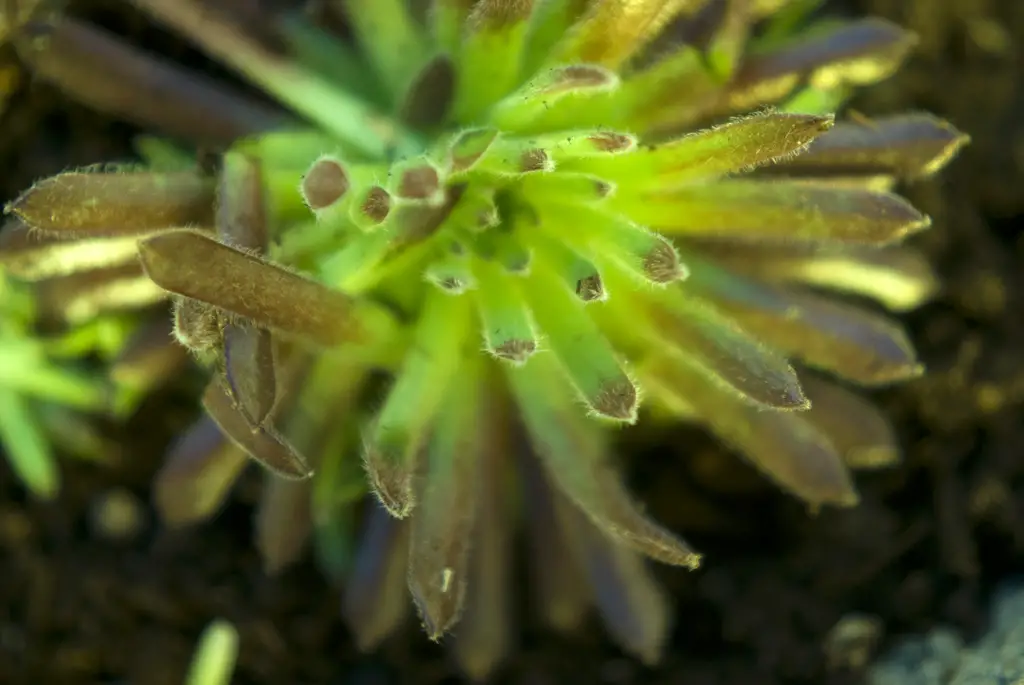Hens and Chicks, the common name for the Sempervivum group of succulent plants, are an attractive and versatile addition to any garden. With their rosette pattern, these hardy plants can grow almost anywhere and are very easy to care for. The “hen” refers to the main plant, while the “chicks” are the offspring that sprout around it. These plants are excellent for rock gardens, container gardening, or even living roofs.
Native to Europe and parts of North Africa, Hens and Chicks have found a home in many gardens across the world. Their ability to thrive in different conditions and the minimal care they require make them a favorite among novice gardeners and experienced horticulturists alike.
These charming plants are not only known for their appealing looks but also for their ability to grow in some of the most inhospitable soils. With proper care and a suitable environment, Hens and Chicks can provide year-round interest in the garden.
| Attribute | Details |
|---|---|
| Common Names | Hens and Chicks |
| Botanical Name | Sempervivum spp. |
| Family | Crassulaceae |
| Plant Type | Succulent |
| Mature Size | 1-4 inches in height |
| Sun Exposure | Full Sun to Partial Shade |
| Soil Type | Well-drained, Sandy |
| Hardiness Zones | 3-11 |
| Native Area | Europe, North Africa |
Hens and Chicks Care
Caring for Hens and Chicks is mostly a hands-off task, making these plants an excellent choice for those new to gardening. They thrive in a full to partial sun location and require well-drained soil.
Overwatering is the most common mistake made with these succulents. They are drought-tolerant, and excessive water can lead to root rot. Watering them once every two weeks or less during the growing season is generally sufficient, and even less during the winter.
Light Requirement for Hens and Chicks
Hens and Chicks prefer full sun but can tolerate partial shade. At least 6 hours of sunlight per day is ideal for these plants. If kept indoors, placing them near a south-facing window would be suitable.
Soil Requirements for Hens and Chicks
Well-drained soil is vital for Hens and Chicks. They are adapted to grow in poor, sandy, or even rocky soils. Adding some sand or perlite to regular potting soil can create the perfect environment for these succulents.
Water Requirements for Hens and Chicks
Watering Hens and Chicks sparingly is key. In spring and summer, watering once every two weeks or when the soil is completely dry is sufficient. During winter, water them even less, as they are in a dormant stage.
Temperature and Humidity
Hens and Chicks are incredibly tolerant of temperature fluctuations. They can survive in temperatures as low as -30°F and as high as 90°F. Humidity is generally not an issue for these hardy plants, although they do prefer a drier environment.
Fertilizer
Hens and Chicks generally do not require fertilizing. If desired, a slow-release granular fertilizer specifically designed for succulents can be used in the spring.
Pruning Hens and Chicks
Pruning is not necessary for these plants. However, removing dead leaves or spent “hens” can improve their appearance.
Propagating Hens and Chicks
Propagation is simple. Detach a “chick” and replant it elsewhere. It will quickly take root and begin to grow on its own.
How To Grow Hens and Chicks From Seed
Growing Hens and Chicks from seed is a slow process but can be done. Sow the seeds in well-draining soil and keep in a sunny location. Patience is required as it may take several years for the plants to mature.
Common Pests & Plant Diseases
Mealybugs
These can be treated with insecticidal soap.
Root Rot
Caused by overwatering, it’s best to allow the soil to dry completely between waterings.
Common Problems With Hens and Chicks
Stretching
This is usually caused by inadequate sunlight. Moving the plants to a brighter location can prevent this problem.
Color Loss
Hens and Chicks may lose color if not provided enough sunlight or if watered excessively. Proper care can restore their vibrant hues.
Pro Tips
- Always plant in well-draining soil to avoid waterlogging.
- Allow the soil to dry out completely between waterings.
- Hens and Chicks can be grown in rock gardens, pots, or even cracks in walls for an aesthetic appeal.
- Choose containers with drainage holes if planting indoors or in pots.




